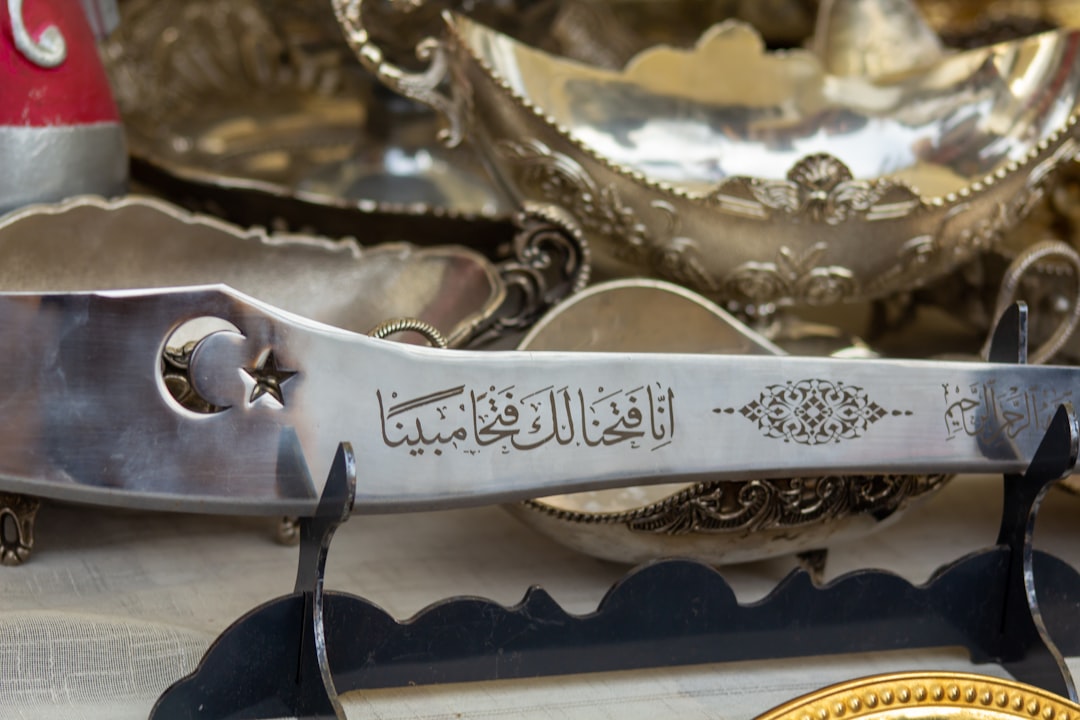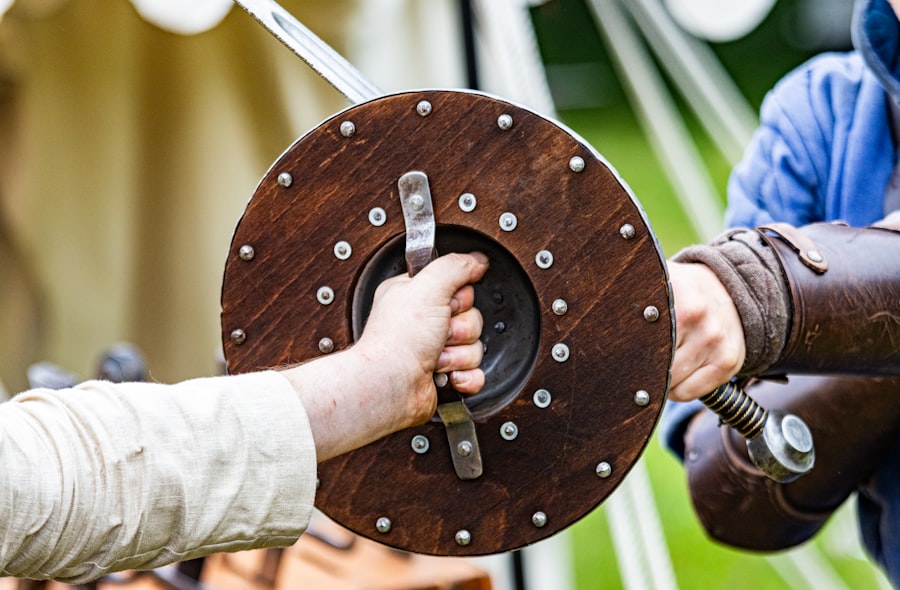
The Arthurian legends, a rich tapestry of myth and history, have captivated audiences for centuries, weaving together themes of chivalry, romance, and the eternal struggle between good and evil. Their origins can be traced back to the early medieval period, particularly in the British Isles, where tales of a heroic king named Arthur began to emerge. The earliest references to Arthur appear in the works of historians such as Gildas and Nennius, who wrote in the 6th and 9th centuries, respectively.
These early accounts were often vague and lacked the elaborate details that would later characterize the legends. It was not until Geoffrey of Monmouth’s “Historia Regum Britanniae” in the 12th century that Arthur’s story began to take on a more defined shape, introducing elements such as Camelot, Excalibur, and the concept of a noble king destined to unite Britain against invaders. As the legends evolved, they absorbed influences from various cultures and literary traditions.
The integration of Celtic mythology, particularly the tales of the Welsh Mabinogion, infused the stories with a sense of magic and otherworldliness. Additionally, the Norman Conquest of England in 1066 brought with it a wave of French literature that further enriched the Arthurian narrative. Writers like Chrétien de Troyes introduced the concept of courtly love and chivalric ideals, which became central to the legends.
This blending of cultural influences not only solidified Arthur’s status as a legendary figure but also allowed the stories to resonate with audiences across different regions and eras. The legends became a reflection of societal values, aspirations, and the complexities of human relationships, ensuring their enduring appeal.
Key Takeaways
- Arthurian legends are rooted in Celtic mythology and historical figures, with the earliest mentions of King Arthur dating back to the 9th century.
- Merlin, a powerful wizard and advisor to King Arthur, plays a crucial role in shaping the destiny of the legendary king and his kingdom.
- The quest for the Holy Grail, a sacred and mystical object, is a central theme in Arthurian legends, symbolizing purity and divine grace.
- The love triangle between King Arthur, his wife Guinevere, and his loyal knight Lancelot is a recurring and tragic theme in Arthurian literature.
- The Knights of the Round Table, led by King Arthur, embark on various adventures and quests, showcasing their bravery, chivalry, and loyalty.
- Arthurian legends have left a lasting impact on literature and pop culture, inspiring countless adaptations, retellings, and references in various forms of media.
- Historians continue to search for the historical basis of Arthurian legends, with debates and theories surrounding the existence of a real King Arthur and the origins of the stories.
The Role of Merlin in Arthurian Legends
The Enigmatic Figure of Merlin
Merlin, the enigmatic wizard and advisor to King Arthur, occupies a pivotal role within the Arthurian legends, serving as a bridge between the mortal realm and the mystical forces that shape the narrative. His character is often depicted as wise and powerful, possessing knowledge that transcends time and space. Merlin’s origins are shrouded in mystery; some accounts suggest he was born of a mortal woman and an incubus, while others portray him as a druid or a prophet.
Guiding the King
This ambiguity adds to his allure, allowing him to embody various archetypes throughout the legends. As Arthur’s mentor, Merlin guides him from his humble beginnings to his ascension as king, imparting crucial wisdom and magical assistance along the way. His role is not merely that of a guide; he is also a catalyst for many of the events that unfold in Arthur’s life, including the fateful moment when Arthur pulls Excalibur from the stone.
A Complex Character
However, Merlin’s character is not without its complexities. As much as he is a figure of guidance and support for Arthur, he is also entwined in themes of fate and tragedy. His prophecies often foreshadow doom for Camelot, hinting at the inevitable downfall that awaits Arthur and his knights. This duality reflects the broader themes present in the legends: the tension between destiny and free will. Merlin’s own fate is tragic; he becomes ensnared by his love for the Lady of the Lake or is ultimately betrayed by those he sought to protect.
A Lasting Legacy
This complexity makes Merlin one of the most compelling figures in Arthurian lore, embodying both wisdom and vulnerability. His presence serves as a reminder that even the most powerful beings are subject to the whims of fate and human emotion.
The Quest for the Holy Grail in Arthurian Legends

The quest for the Holy Grail stands as one of the most iconic narratives within the Arthurian legends, symbolizing not only a physical journey but also a profound spiritual quest for purity and enlightenment. The Grail is often depicted as a sacred vessel associated with Christ, believed to possess miraculous powers that can heal and grant eternal life. The quest itself is initiated by King Arthur’s knights, who are driven by a desire to find this elusive object and restore honor to Camelot.
The search for the Grail is fraught with challenges and moral dilemmas, forcing each knight to confront their own weaknesses and desires. Sir Galahad emerges as the quintessential Grail knight, embodying purity and virtue; his success in finding the Grail underscores the importance of inner strength and moral integrity. The quest also serves as a narrative device that highlights themes of sacrifice and redemption.
Many knights who embark on this journey face trials that test their character and resolve. For instance, Sir Lancelot’s quest is complicated by his love for Guinevere, which ultimately leads him astray from his noble intentions. This intertwining of personal desires with the overarching quest for spiritual fulfillment illustrates the complexities of human nature.
The Grail quest becomes not just about finding an object but about understanding oneself and one’s place in a larger cosmic order. In this way, it reflects broader philosophical questions about faith, morality, and the pursuit of truth—elements that resonate deeply with audiences across generations.
The Love Triangle of King Arthur, Guinevere, and Lancelot
| Character | Role | Outcome |
|---|---|---|
| King Arthur | King of Camelot | Heartbroken by Guinevere’s affair with Lancelot |
| Guinevere | Queen of Camelot | Torn between her love for Arthur and Lancelot |
| Lancelot | Arthur’s trusted knight | Falls in love with Guinevere, causing turmoil in Camelot |
At the heart of many Arthurian tales lies a poignant love triangle involving King Arthur, his queen Guinevere, and his most trusted knight Lancelot. This complex relationship serves as a microcosm of the broader themes of loyalty, betrayal, and the consequences of desire that permeate the legends. Guinevere’s love for Lancelot is both passionate and tragic; it represents an idealized form of love that ultimately leads to chaos within Camelot.
Their affair is not merely a personal betrayal but also an affront to the chivalric code that binds Arthur’s knights together. As Lancelot grapples with his feelings for Guinevere, he finds himself torn between his loyalty to Arthur and his desire for her—a conflict that ultimately leads to devastating consequences for all involved. The ramifications of this love triangle extend far beyond personal heartbreak; they serve as catalysts for the disintegration of Camelot itself.
The revelation of Guinevere’s infidelity ignites tensions among the knights, leading to divisions that weaken their once-unbreakable bond. This fracturing mirrors larger societal themes about honor and integrity; it raises questions about whether love can coexist with duty and loyalty. As Arthur grapples with his heartbreak and betrayal, he becomes emblematic of a king whose ideals are shattered by human frailty.
The tragic nature of this love triangle resonates deeply with audiences, illustrating how even noble intentions can lead to ruin when passion overrides reason.
The Knights of the Round Table and Their Adventures
The Knights of the Round Table represent an idealized vision of chivalry and camaraderie within Arthurian legends, embodying virtues such as bravery, loyalty, and honor. Each knight brings unique qualities to this legendary fellowship, contributing to their collective identity as defenders of justice and champions of noble causes. Figures like Sir Gawain exemplify courage in battle while also grappling with personal dilemmas that test their moral fiber.
The Round Table itself symbolizes equality among these knights; unlike traditional hierarchical structures, it fosters an environment where each knight has an equal voice in matters concerning Camelot. This egalitarian ethos enhances their bond as they embark on quests together—whether it be rescuing damsels in distress or confronting formidable foes. The adventures undertaken by these knights are not merely tales of valor; they often serve as allegories for personal growth and self-discovery.
Each quest presents challenges that force them to confront their own limitations and fears. For instance, Sir Percival’s journey to find the Holy Grail is as much about external challenges as it is about internal transformation; he must learn humility and selflessness before he can achieve his goal. These narratives reflect broader themes about heroism—suggesting that true bravery lies not just in physical prowess but also in moral integrity and self-awareness.
Through their trials and tribulations, the Knights of the Round Table become embodiments of ideals that continue to resonate with audiences today.
The Legacy of Arthurian Legends in Literature and Pop Culture

Reimagining the Classics
Arthurian legends have left an indelible mark on literature and popular culture, inspiring countless adaptations and reinterpretations. From Tennyson’s poetic renditions in “Idylls of the King” to modern novels like Marion Zimmer Bradley’s “The Mists of Avalon,” these stories have been reimagined through diverse lenses that explore themes such as feminism, power dynamics, and cultural identity. Each retelling offers fresh perspectives on familiar characters while maintaining core elements that define the legends—such as honor, betrayal, love, and sacrifice.
Universal Appeal
The adaptability of Arthurian legends speaks to their universal appeal; they resonate with audiences across different cultures and eras because they address fundamental human experiences. In addition to literature, these legends have permeated film and television, shaping popular narratives in ways that reflect contemporary values and concerns.
Evolution Across Mediums
Iconic films like “Excalibur” (1981) or Disney’s animated “The Sword in the Stone” (1963) showcase varying interpretations—from darkly epic portrayals to whimsical adaptations aimed at younger audiences. Television series such as “Merlin” or “Camelot” further explore these themes while introducing modern storytelling techniques that engage new generations. Video games like “Kingdom Come: Deliverance” also draw upon these legends to create immersive experiences rooted in medieval lore. Through these diverse mediums, Arthurian legends continue to evolve while remaining relevant—a testament to their timeless nature.
Uncovering the Historical Basis of Arthurian Legends
While much of what we know about King Arthur and his knights is steeped in mythological embellishment, scholars have long sought to uncover any historical basis for these legendary figures. Some historians posit that Arthur may have been inspired by real leaders who fought against Saxon invasions during the post-Roman period in Britain—figures like Ambrosius Aurelianus or even local chieftains who embodied resistance against foreign domination. Archaeological evidence suggests that certain locations associated with Arthurian lore—such as Tintagel Castle—were indeed significant during this era, lending credence to theories about a historical king or warrior who inspired these tales.
However, distinguishing fact from fiction remains a complex endeavor due to the nature of oral traditions that preceded written records. As stories were passed down through generations, they inevitably morphed into grand narratives filled with fantastical elements—merging history with myth in ways that complicate our understanding today. Moreover, cultural influences from Celtic mythology further obscure any potential historical truths behind these characters.
Despite these challenges, ongoing research continues to shed light on how historical events may have shaped these legends while simultaneously acknowledging their mythic qualities—ultimately enriching our appreciation for this captivating blend of history and fantasy that defines Arthurian lore.
FAQs
What are Arthurian Legends?
Arthurian Legends are a collection of stories, myths, and folklore surrounding King Arthur, the Knights of the Round Table, and the kingdom of Camelot. These legends have been passed down through oral tradition and written texts for centuries.
Who was King Arthur?
King Arthur is a legendary British leader who, according to medieval histories and romances, led the defense of Britain against Saxon invaders in the late 5th and early 6th centuries. He is often depicted as a wise and noble king, known for his magical sword Excalibur and his trusted advisor Merlin.
What are some famous characters in Arthurian Legends?
Some famous characters in Arthurian Legends include Queen Guinevere, Sir Lancelot, Sir Gawain, Sir Galahad, and the sorcerer Merlin. These characters play key roles in the various stories and adventures associated with King Arthur and the Knights of the Round Table.
What are some popular stories within Arthurian Legends?
Some popular stories within Arthurian Legends include the quest for the Holy Grail, the love triangle between King Arthur, Queen Guinevere, and Sir Lancelot, and the adventures of the Knights of the Round Table as they seek to uphold chivalry and honor.
Where did Arthurian Legends originate?
The origins of Arthurian Legends are rooted in Celtic and medieval literature, with early mentions of King Arthur appearing in Welsh and Breton folklore. Over time, these stories were further developed and popularized by medieval writers such as Geoffrey of Monmouth, Chrétien de Troyes, and Sir Thomas Malory.
What is the significance of Arthurian Legends?
Arthurian Legends have had a significant impact on literature, art, and popular culture throughout history. They have inspired countless adaptations, retellings, and interpretations, and continue to capture the imagination of audiences around the world. The legends also embody themes of honor, chivalry, and the struggle between good and evil.






